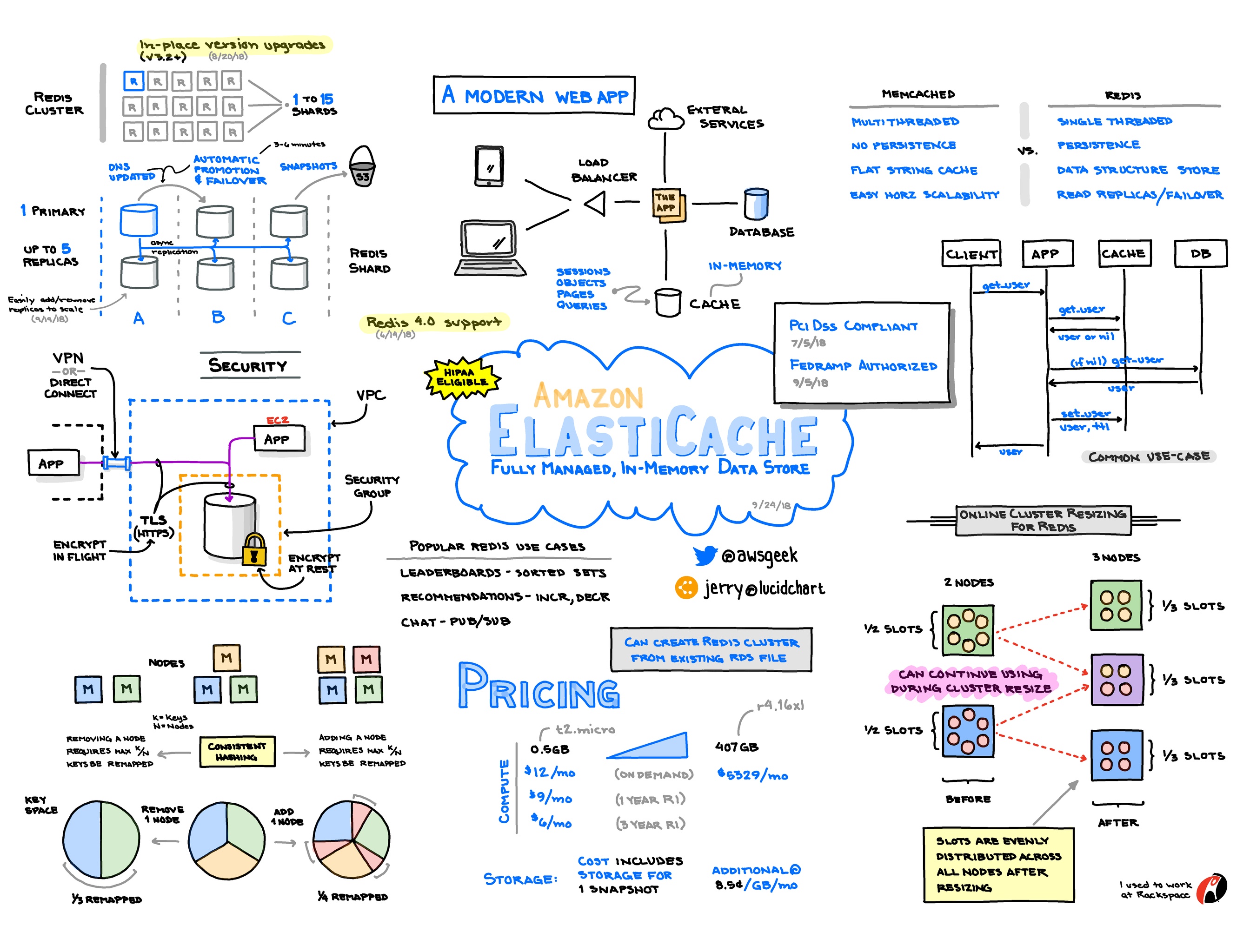
Image from @awsgeek
ElastiCache
ElastiCache Basics
- 📒 Homepage ∙ User guide for Redis ∙ User guide for Memcached ∙ FAQ ∙ Pricing
- ElastiCache is a managed in-memory cache service, that can be used to store temporary data in a fast in-memory cache, typically in order to avoid repeating the same computation multiple times when it could be reused.
- It supports both the Memcached and Redis open source in-memory cache software and exposes them both using their native access APIs.
- The main benefit is that AWS takes care of running, patching and optimizing the cache nodes for you, so you just need to launch a cluster and configure its endpoint in your application, while AWS will take of most of the operational work of running the cache nodes.
ElastiCache Tips
- Choose the engine, clustering configuration and instance type carefully based on your application needs. The documentation explains in detail the pros, cons and limitations of each engine in order to help you choose the best fit for your application. In a nutshell, Redis is preferable for storing more complex data structures, while Memcached is just a plain key/value store. The simplicity of Memcached allows it to be slightly faster and allows it to scale out if needed, but Redis has more features which you may use in your application.
- For Memcached AWS provides enhanced SDKs for certain programming languages which implement auto-discovery, a feature not available in the normal memcached client libraries.
ElastiCache Gotchas and Limitations
- Since in some cases changing the cache clusters may have some restrictions, like for scaling purposes, it may become a problem if they were launched using CloudFormation in a stack that also contains other resources and you really need to change the cache. In order to avoid getting your CloudFormation stacks in a non-updateable state, it is recommended to launch ElastiCache clusters (just like any other resource with similar constraints) in dedicated stacks which can be replaced entirely with new stacks having the desired configuration.